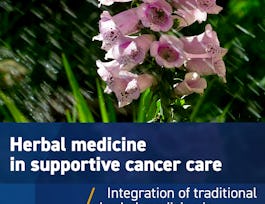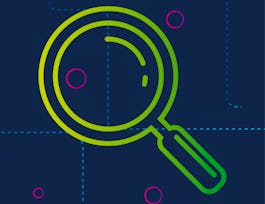While prescription opioids serve an invaluable role for the treatment of cancer pain and pain at the end of life, their overuse for acute and chronic non-cancer pain as well as the increasing availability of heroin and illicit fentanyl, have contributed to the highest rates of overdose and opioid addiction in U.S. history. Evidence-informed solutions are urgently needed to address these issues and to promote high-quality care for those with pain. This course and the report it is based on are a response to that need. They offer timely information and a path forward for all who are committed to addressing injuries and deaths associated with opioids in the United States.



Opioid Epidemic: From Evidence to Impact

Instructor: Shannon Frattaroli, PhD, MPH
Sponsored by Syrian Youth Assembly
3,834 already enrolled
(49 reviews)
What you'll learn
Identify data sources for information about the opioid epidemic in the United States and explain general trends in opioid overdose deaths.
Identify ways that prescription drug monitoring programs (PDMPs) can be used to reduce the supply of prescription opioids
Explain why pharmacy benefit managers are relevant to opioid epidemic
Explain the role of prescribing guidelines, safe storage, treatment, reducing stigma, and product design in opioid epidemic
Details to know

Add to your LinkedIn profile
10 assignments
See how employees at top companies are mastering in-demand skills


Earn a career certificate
Add this credential to your LinkedIn profile, resume, or CV
Share it on social media and in your performance review

There are 10 modules in this course
This module reviews the data available about opioid use disorders in the United States. Information about general trends in opioid overdose, and some limitations of current data systems are discussed. This module draws from section 6 of the "The Opioid Epidemic" report (2017).
What's included
7 videos1 reading1 assignment
This module provides an overview of Prescription Drug Monitoring Programs (PDMPs). Explanations of how PDMPs are used to reduce the supply of prescription opioids likely to be misused are discussed. A review of the research about PDMPs is also included. This module draws from section one of the "The Opioid Epidemic" report (2017).
What's included
1 video1 assignment
This module reviews prescribing guidelines as an intervention for reducing high risk opioid prescribing. A conversation between the course instructors and representatives from CDC’s National Center for Injury Prevention and Control about CDC’s Guideline for Prescribing Opioids for Chronic Pain provides insight into the process of developing and disseminating one guideline. This module aligns with section two of of the "The Opioid Epidemic" report (2017).
What's included
3 videos1 assignment
This module provides an overview of the role of pharmacy benefit managers and pharmacies in the supply of prescription opioids. Opportunities to monitor high risk prescribing through PBMs and pharmacies are also discussed. This module draws from section three of the "The Opioid Epidemic" report (2017).
What's included
1 video1 assignment
This module introduces the idea that redesigning opioid medications and the pill vials they are prescribed in is one strategy to reduce unintentional opioid poisonings and diversion. The module features a discussion of a prototype design for a pill vial engineered to dispense a specified amount of medication at programmed intervals to authorized users. This module aligns with section four of the "The Opioid Epidemic" report (2017).
What's included
3 videos1 assignment
This module reviews strategies for communicating with patients and the public about opioid use disorders. Safe storage and disposal strategies are also discussed. This module draws from section five of the "The Opioid Epidemic" report (2017).
What's included
1 video1 assignment
This module discusses addiction as a disease and medication as treatment. Consideration of known risk factors for disease are also reviewed. This module aligns with section seven of the "The Opioid Epidemic" report (2017).
What's included
8 videos1 assignment
This module describes naloxone, a medication that effectively reverses an opioid overdose, and how access to naloxone has increased. The role of government agencies in disseminating naloxone prescriptions is also highlighted. This module draws from section eight of the "The Opioid Epidemic" report (2017).
What's included
4 videos1 assignment2 plugins
This module provides an overview of harm reduction in the context of opioid use disorders. Examples of harm reduction strategies are provided, and the available evidence discussed. This module aligns with section nine of the "The Opioid Epidemic" report (2017).
What's included
7 videos1 assignment
This module discusses the stigma surrounding drug use and treatment. Strategies for combatting stigma by providing alternatives to stigmatizing language are discussed. This module draws from section 10 of the "The Opioid Epidemic" report (2017).
What's included
4 videos1 assignment
Instructor

Offered by
Why people choose Coursera for their career




Learner reviews
49 reviews
- 5 stars
79.59%
- 4 stars
12.24%
- 3 stars
6.12%
- 2 stars
0%
- 1 star
2.04%
Showing 3 of 49
Reviewed on May 22, 2020
Amazing course! I have learned so much from the wide array of lecturers and I am now planning on specialising on this subject through my MPH next year
Reviewed on Aug 23, 2022
This course was very helpful in understanding the extent of the problem and the kind of solutions that can be there. It will help me to look at the issue in a different light.
Reviewed on Jun 14, 2022
Good, informative course that taught me a lot on the opioid epidemic and the ways to help combat this overbearing issue.
Recommended if you're interested in Health

University of Minnesota

Technion - Israel Institute of Technology

Imperial College London

Yale University

Open new doors with Coursera Plus
Unlimited access to 10,000+ world-class courses, hands-on projects, and job-ready certificate programs - all included in your subscription
Advance your career with an online degree
Earn a degree from world-class universities - 100% online
Join over 3,400 global companies that choose Coursera for Business
Upskill your employees to excel in the digital economy


